Review: Antipodes Audio S40 Music Server: Finally a truly “musical” digital font
We are going to test this time a digital source, a server that is also a player, innocent in appearance but we will soon discover what an amazing performance. Its modular nature and its versatility means that the test has several parts or sections, and this is trying to simplify because the variables are many … In fact we will leave the test of its younger brother (Antipodes S30) for another report, to focus now on this S40.
This is a proof of a pure digital source, that is, what a “transport” would be if we used the language of the original digital sources. Then (well and still) we had on the one hand the optical disc reader (that “transport”) and on the other the DAC that receives the “zeros and ones” and converts them into the analog signal that will go to the amplification and speakers. Anyone who has done enough testing will know that not all transports end up offering the same sound. The same happens with digital servers and network players: although they all read the same file (from a hard disk or via the Internet) and send it converted into “zeros and ones” that the DAC can convert … for some reason the conversion does not it’s the same.

Must as different CD players sound different with the same DAC, different file players also offer a different sound, and also different from that CD if we have converted it into a digital file. Digital transfer can be perfect (it usually is) but not even the “bit perfect” guarantees what we will hear. At this point we have tried many players, from simple to good and very good, and their sound may be perfect, but… what about music? Well, with the Antipodes S40 we have discovered that, a truly musical server / player.
Antipodes Audio
Who are Antipodes? After a few beginnings making cables, the New Zealander Antipodes (what an appropriate name at least for the Spaniards) began working ten years ago on digital music servers and players. Its founder, Mark Jenkins, understands and pursues the best technology in all areas and in particular, thinking of a digital server, at the level of computer components that are ultimately the origin of any modern digital source. But he does it with a particular perspective, because experience has made him distrust: some advances in technology do contribute something positive to the quality of the final sound, but others only seek to improve performance in (for example) data transfers and have an influence negative in sound.
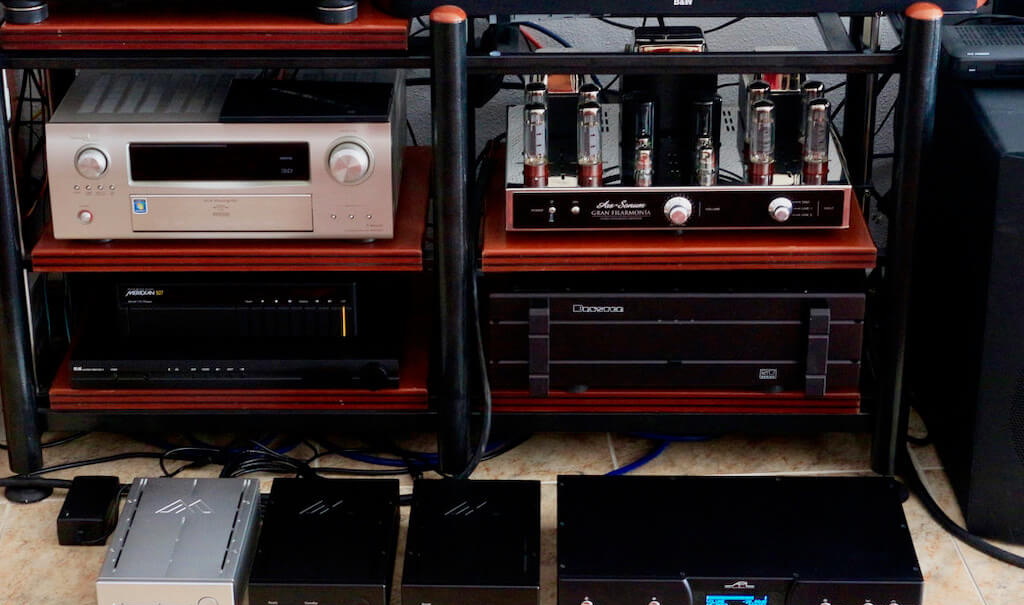
How to measure or predict if a computer component will be better or worse for a music player? Getting it systematically, understanding it, and not hitting it “by chance” is precisely where they focused on Antipodes. The key is in the noises that are generated at different points on the used motherboards: how some of those noises are very pernicious, how some can be eliminated by playing with the power and how some can be modulated to minimize their effect on the digital signal. . Although they have been improving each product since 2011, the “jump” takes place in 2017 with what they call “Project Oladra” and which focuses the technology of its sources in two areas: the management of interferences between different noise spectra (they minimize interference between internal computer noises),
With these premises, Antipodes has in its top-of-the-range server / player K50 (15,750 euros) the maximum exponent of its technology: this “beast” includes two internal computers in a single chassis (one acts as a server and the other as a player), plus a third processor with precision clock and (digital) output functions. That, plus his food, worked very hard. But with the different components of the more affordable “S” series that we have tested, you can get to that “heaven” in digital playback, and that is precisely what we have tested, step by step. Each device is a computer that we can dedicate to the desired function or that we need: player, server / player or server. Antipodes advocates using a dedicated processor for a single function (that minimizes your work and potential interference),
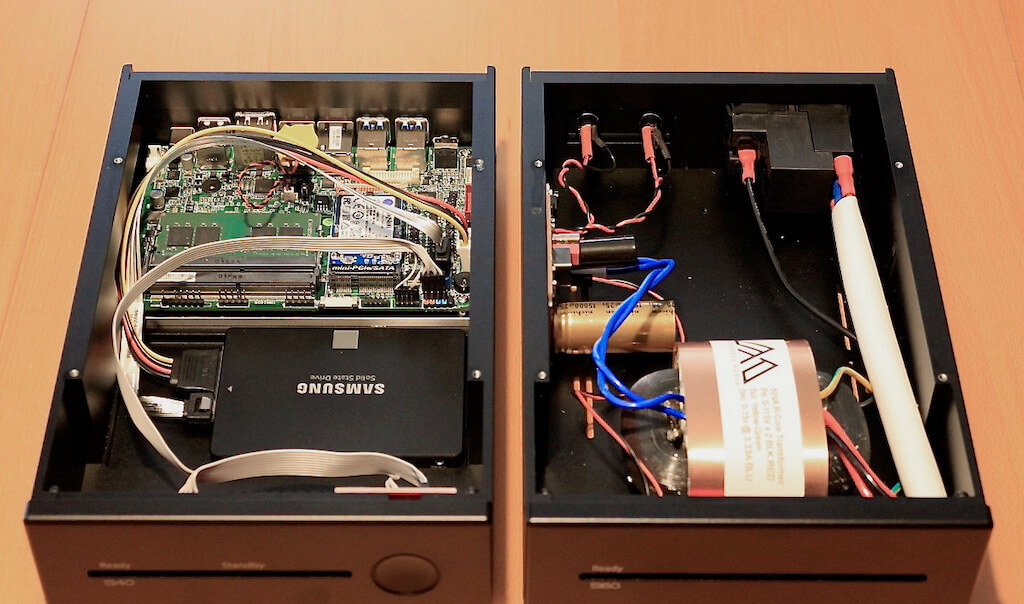
Let’s start with the Antipodes S30 (2675 euros), which is an independent server / player and uses an internal computer based on the top of the range (but not the same), and includes an internal DAC to be able to use it directly as a source. The next step is the Antipodes S40 (5250 euros), also a server / player but that already uses the same internal computer as the K30 (but only one), since the K50 uses an even more powerful computer or motherboard. We can add the improved Antipodes S60 power supply (together with the S40 are 6595 euros) and we can also add the “reclocking” with improved Antipodes S20 digital output (2625 euros). If we put two S40s together, with two S60s and one S20, we would have almost what the K50 offers in a single chassis, for an equivalent price but with the advantage of being able to go step by step. And you can also save something by using the S40 as a server with an S30 as a player in that combination (something like a “K30 light”). It’s a bit confusing, yeah …
Endless possible combinations
The “physical” configuration possibilities (hardware) are already quite complex, as you can see, but if we add the configuration options (software) things get exponentially complicated. And it is that in Antipodes he has also appreciated that not all operating systems sound the same: in fact and depending on the version (each one presents evolutions at different times) the favorite may not always be the same. In addition, some are free and others require paying a license … Solution? Antipodes are compatible with all: we can use it as a server or / and player under Roon, Squeeze (the old Logitech Squeezebox), like Sonos, DLNA (universal), with MPD, with HQPlayer or with Plex.
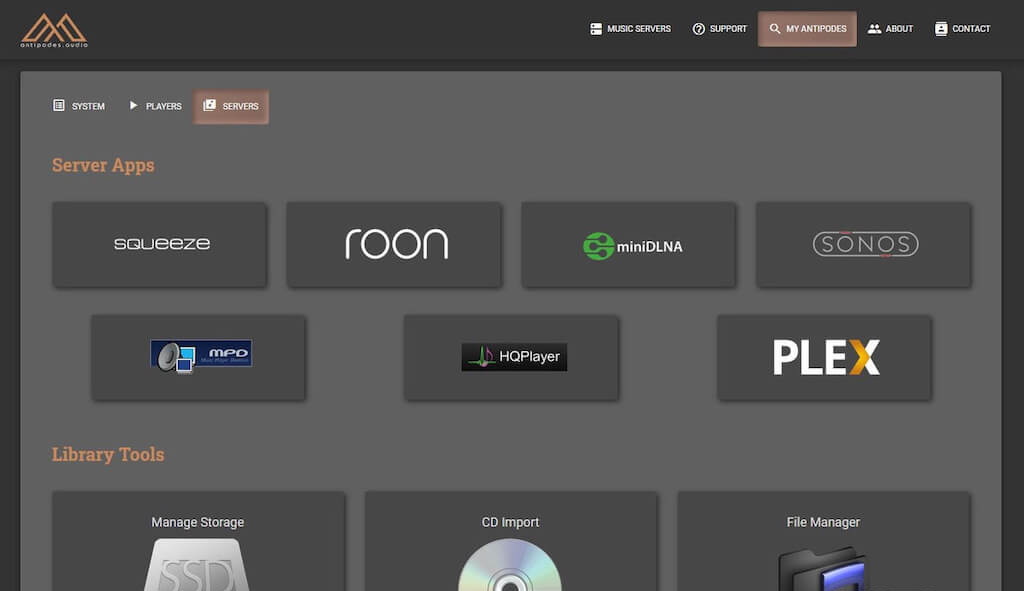
We tested different configurations but to avoid over complicating something that is no longer simple, we always use Roon and we will stick with these combinations for this test: the Antipodes S40 as a player (with Roon on a computer), the S40 as its own Roon server and also player, and finally the S40 as a dedicated server towards an S30 as a player. Also say that we add the S20 recloker at one point to the equation, as the icing on the cake, and that we use the improved S60 font almost always. As a fixture we always use the excellent DAC APL DSD-AR converter (6990 euros) although we occasionally tested our alternatives, and although we also heard the system in our equipment in the living room, the “hard work” of testing and comparison took place in my equipment more capable and decisive, in my basement,
Let’s recap before we get down to work: digital playback first needs a server that controls the library (whether it’s on a hard drive or on the internet) and sends the music to the player. Then there is the player that converts those music files into a digital audio signal and sends it (via USB or SPDIF) to the DAC. The Antipodes S40 can be used for its internal processor to act as a player, as a server or as a server and player: that is chosen from the device’s configuration web page. We enter the Antipodes website from a mobile or computer and from there, connected to the same home network as the devices. If it is a player, there we can also choose which program to use (Roon in our case) and which digital output, among other parameters. If it is a server, we can see and edit the library (to record music files on your internal hard drive for example).
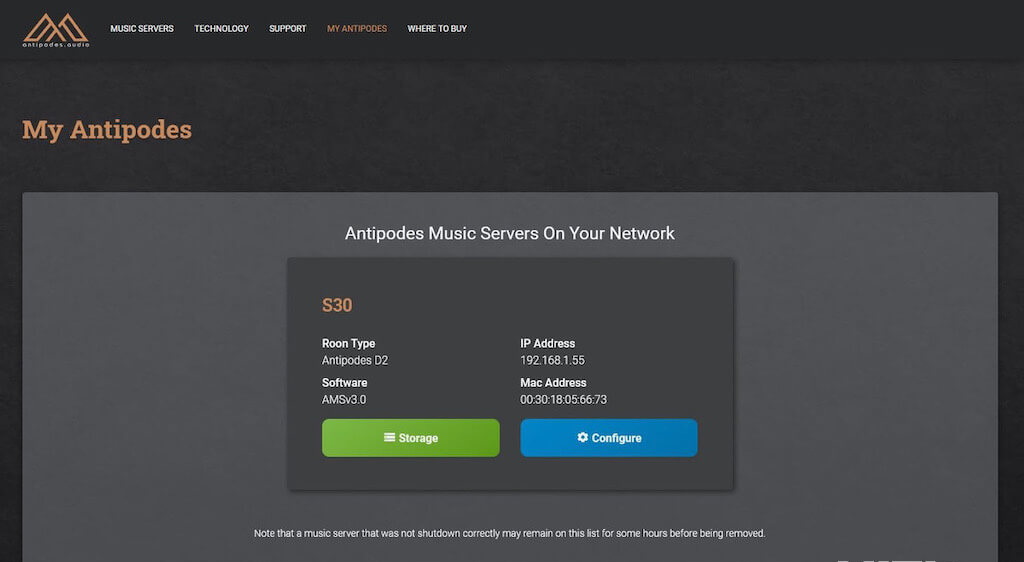
Here I make one more final paragraph: as is becoming more and more frequent, the Antipodes make it mandatory to have a mobile phone (also a tablet or a computer) as a control. Its only front button serves to start the internal computer when it is connected, and leave it to sleep when we finish (necessary before turning it off completely as well). I miss a traditional remote control for elementary functions, like stop or skip tracks, and also a screen that informs me of what is playing. Surely Antipodes argues that these could be sources of noise, but I find it uncomfortable to depend on a mobile or tablet (which is never so instantaneous).
Antipodes S40 as a player
This configuration will be the most familiar to most and surely the one that many would choose on their own computer to start with. We tested the Antipodes S40 as a pure player, that is, as a “streamer” of digital music files to a DAC and the rest of the equipment. It could be used as is with the DLNA protocol, possibly the simplest: from any control application (such as Bubble UPnP or mConnect) we choose what we want to listen to (a file that we have stored or shared, or something from Tidal) and Antipodes plays it. This is what is called “Pull” because the player “pulls” the file to play it, and this is how most people use their digital players.
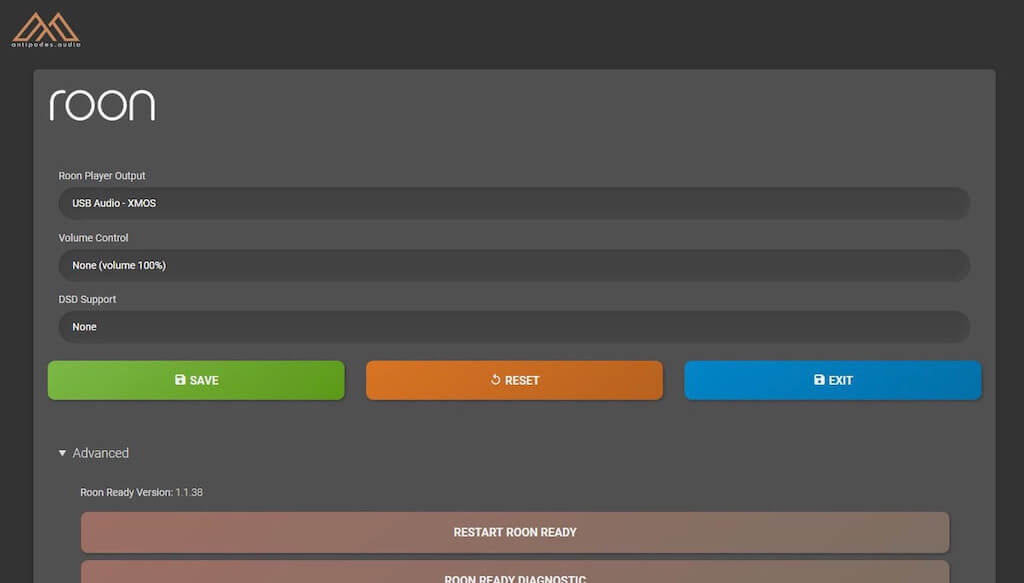
But to do all the tests without another variable, we use Roon software, which we have been users of for a long time. In this case it is a “Push” solution: from the control application (Roon’s own in this case) we choose what to listen to and the server “pushes” it to the player, something that seems Antipodes also prefers, although his favorite solution seems to be to use HQPlayer. Roon, in addition to being excellent at finding or combining music, is very good at playback and has tools (DSP) to “play” at different levels (it can even integrate HQPlayer precisely). We don’t turn on any of that, apart from the MQA (which “displays” higher resolution than the 16 bit 44 kHz on the CD) when we occasionally listen to something “Master” from the Tidal music service.
Using Roon implies having your server program running on a home computer, logically connected to the same network. In my case, it is a miniPC with enough power, to which I have my hard drives with music files connected, but there are tailor-made “Roon Core” solutions (and a cost added to the license, which is not free). Configured as a player, the Antipodes S40 was controlled from the Roon application (mobile or computer) and received the music from my Roon Server to send it to the DAC… like any other network player I have tried lately.
Already in this configuration the Antipodes S40 made a difference. I did not have an equivalent player next to it (it could be the Lumin U1 for example whose Mini version we already tested ) but … the Antipodes always has a “something” that distinguishes it. A superior digital transport always offers more density in the scene, more depth, the placement of instruments and singers is better appreciated: instead of being point sound sources, they take on body and volume and everything is more real. All of this was accomplished with the S40, but there was something else: the scene was even bigger, the dynamics were clearly better and the timbres of the voices or stringed instruments were more natural, they sounded much more real.
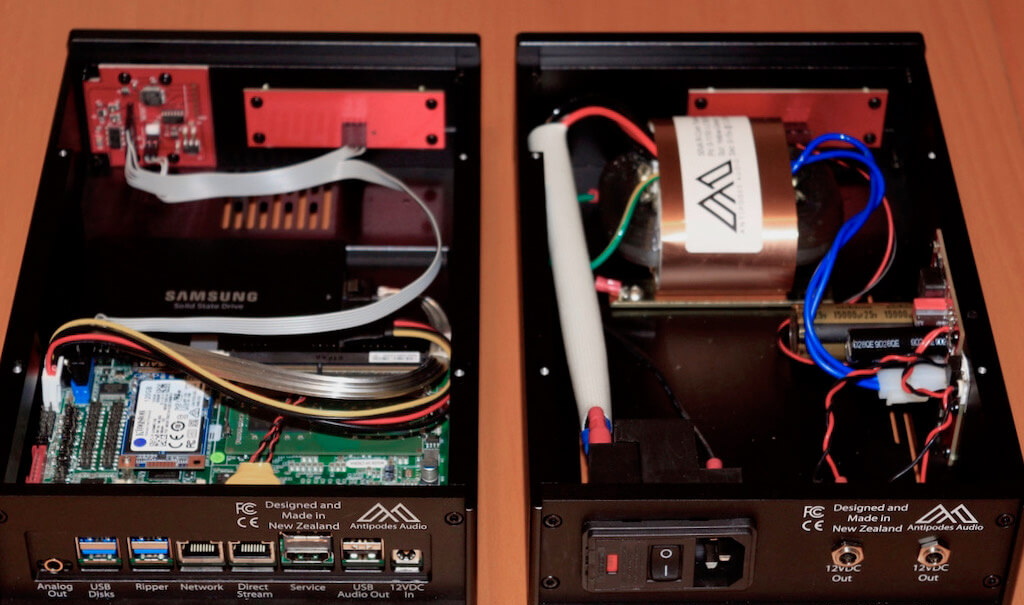
The two things that most caught my attention as the songs and hours went by, perhaps accustomed to the rest, were the dynamics and the timbres. The timbre allows you to clearly distinguish the instrument that sounds, or whose voice it is, and is something that digital sources sometimes confuse. The dynamics of a real live instrument never seem to be achieved in any equipment, and when they get closer it does not go unnoticed. The hit on the strings of a piano or that of a stick on a vibraphone awakens the senses… I liked the latter so much that one of the “fixed” themes I used in these tests was the one from the movie “True Romance” (Love to Point-blank) from Hans Zimmer’s live show. Those notes hadn’t sounded like that to me before.
Here I took the opportunity to compare the original standard power supply (a traditional switched type laptop power adapter) versus the improved Antipodes S60 (linear regulated). Even in a pure digital source, the vital importance of its power supply was very clear: be careful that the Antipodes S40 consumes a lot of current (I measured 30 watts peaks) and it is clear that it needs a powerful, clean but also dynamic source. With the S60, the depth of the scene improved and also that “presence” of each instrument or protagonist, perhaps because a veil was lifted (less noise).
Antipodes S40 as server and player
It is another option that, for me, is the best way to get out of our investment in an Antipodes S40. Not everyone already has a computer mounted (and dedicated) with music hard drives to share it on the home network like I do, and although you can have in another room (as is my case) the idea of having a computer always connected not like everyone either.

Well, let’s forget about the computer: with an S40 we won’t need it because its processor has plenty of power to “run” the software, even Roon Server, and inside we can house a hard disk (up to 8Tb SSD which is a lot of music). It was enough to enter the web of the device and indicate that we want it “ServerPlayer” and not “Player”, and configure the server with Roon. Our unit brought a 2Tb disk with music, but when connecting it to the home network and activating its Roon server (it asked us to deactivate ours, because you can only have one active in a network) it recognized our shared library as well, as if we had a NAS server at home. Likewise, other players could access this new Roon music server. All advantages: this is how we have also been testing the Antipodes S40 for a longer time, because as I say, I understand that it is the configuration that will fit more people.
In practice, what we achieve with this configuration is to eliminate the network from the system: when we play files from the internal hard drive, obviously the network does not intervene except in the control (the remote control is always the mobile, remember). When it is something from Tidal, for example, it is the internal Roon of the Antipodes S40 that “calls” Tidal to retrieve the music (over the network) and then plays it: the next step, as we will see, will be to connect to the network “Direct Stream” output of the S40 other antipodes (S40 or S30) that is only player. In addition, we are using a computer dedicated one hundred percent to the Roon server task (not the computer shared with other tasks that I, for example, have).
How does all this translate into listening? The same Tidal tracks that I had heard with the S40 as a (solo) player now appeared to me in more detail: those vibraphone notes were longer in time, marking a space that seemed larger. In the choirs there was more air, but also the music was somewhat denser … some things with others, of course I am clear that it sounded much better, and it was very close to the sound of a good analog source but with a higher level of detail. A timpani sounded like skin, and I was overwhelmed by the real, present, that suddenly the powerful voice of Beth Hart sounded (songs from her album “Better than Home” or from the direct with Joe Bonamassa). A voice that is not confused but appreciates his breathing, his timbre, his spirit there in front … fantastic.

Two Antipodes: S40 server and S30 player
What is the next step? Well, we already said it: dedicate a processor for each task, that is, leave the Antipodes S40 as a server (and only that), and add an S30 leaving it as a pure player. The S60 power supply has two outputs to be able to feed both of them with optimized current, and now on the “My Antipodes” website, both of them appeared to be able to configure them as I wanted. The network connection of the player (S30) instead of going to the router connects directly to the output of the S40 to take advantage of the «Direct Streaming» that isolates the S30 from the rest of the network (another advantage). And from the S30 to the DAC, via USB … for now (we’ll get to that).
I did not know what to expect from this combination after having enjoyed a lot (and for several days in the salon team since the “transfer” was easy) of the S40 … but it did not take me long to understand why Antipodes opts for using multiple processors in its « K »top of the range. I understand that it is related to the lower need for processes (each CPU is dedicated to a task) and that optimizes the internal noises, which seems to be the magic recipe that these New Zealanders have found to achieve this superiority in digital music reproduction. Be that as it may, it was immediately clear to me and that is how it appears in my notebook: “I like it better!”
Without losing anything appreciated before, this change reminded me of the difference between using the Antipodes S40 only with its standard power supply and moving to the improved S60. Somehow the (invisible) noise background was lower, the silences were deeper, and that meant releasing the dynamics a bit more … already really explosive, something that I also appreciated in the rhythm of the bass and its impact. Just as the piano is often my favorite instrument to detect changes in dynamics (if the hammer hitting the strings is not real, it does not sound like a “real” piano), the violin helps to detect, like voices, a timbre natural and realistic. Probably because they are instruments that I have listened to more or that we all have more present … The fact is that with this configuration, the dynamics of violins caught my attention: the attacks, the incisiveness of the bow,
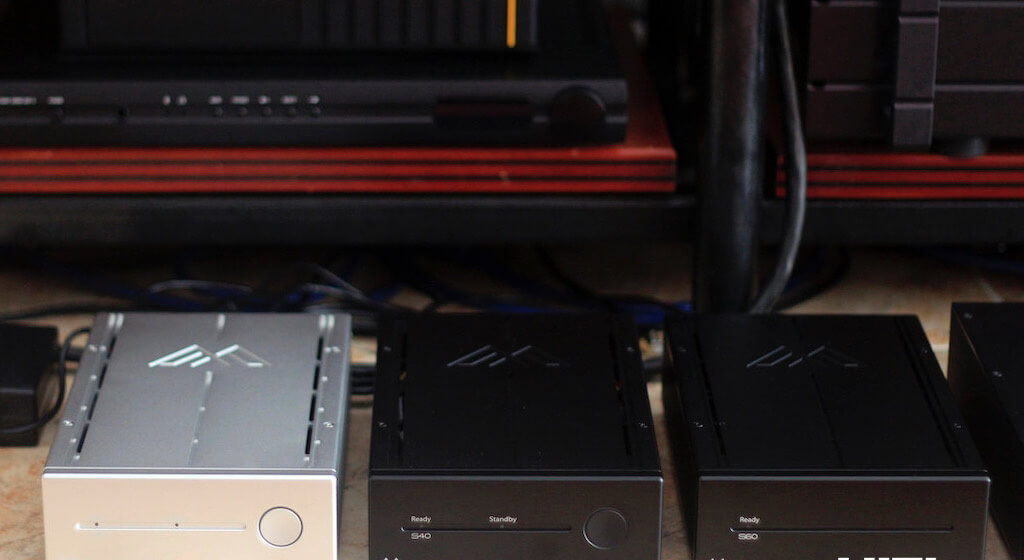
The icing on the cake: Antipodes S20 «reclocker»
So far all the tests have been done by connecting the player to the DAC via USB, in fact the Antipodes (both S40 and S30) only have that digital output to the DAC. But there is another product in the brand, which we discussed at the beginning and which has the “top” K50 inside: the Antipodes S20 is a processor with a very high precision clock (Femto) that converts the USB digital signal to SPDIF (coaxial RCA and BNC), AES3 (XLR) or I2S (HDMI) and that also offers the clock output (by BNC) for those DACs that have an external clock input.
Yes, I do not lack any digital output: Antipodes offers as a “superior” option to pass the USB connection, and they prefer that we use the traditional SPDIF (or I2S in compatible DACs). They justify this in part by the higher quality of the connection through the S20 (precision clock and re-formed signal) and in part because one of the things they have discovered optimizing their servers and players is that the USB standard has been optimized for the use with data (computers) but it has gotten worse for audio, and to that is added that the noise from the network (Ethernet connection) multiplies this problem.
Well, just try the S20 to prove them right. When we already thought we were in a “ten” with the S40 and S30, sandwiching the S20 between its USB outputs and the SPDIF input (we didn’t even test I2S) of the DAC left us in awe. A true “honor plate” because to what we had already been appreciating, there was added a naturalness of timbre never experienced with a digital source, textures in the sound more realistic even than those offered by a good cymbal. I was admiring this ensemble while I did this test with several songs, but I remember very in particular how Hilary Hahn’s violin (Bach concerts at Deutsche Grammophon) sounded like I had never heard it before, not even with very high-profile SACD, because that recording was made by I have in that format too. Although the word does not correspond to the beauty of that music, I have to write it: brutal.
Antipodes Audio S40 Music Server – Conclusions
Let’s remember: the mission of a pure digital source (server / player) consists in sending the best possible signal to the final DAC converter for this conversion, and that the final analog sound is more than sound … it is music. We have long wanted to test a digital source that, in addition to providing “perfect sound”, was truly musical. And that is precisely what they achieve in Antipodes with their S40, a device that everyone can use in their system as they prefer, adapting to whether we already have a computer-server, or we do not want to depend on one. A device that will allow us to evolve, if we want to look for “more”, up to the equivalent of the fantastic K50 in a modular way and “paid in installments”.
But what has surprised us is that the S40 alone has already changed the reference of how a digital player could (or should) sound: as I see it, and for those who already have a system of a certain level, add a Antipodes S40 will provide a sound quality that has nothing to envy even the best sources (CD or platter) and will open the doors to the infinite music currently available. If we complete it with an S60 font and the S20 reclocker, which as a conclusion of my tests I would define as “the sweet spot” of all possibilities, we would still be in reasonable budgets and already with a source of absolute reference, easy to use, upgradeable. and above all that it will let us enjoy the music. It deserves the most enthusiastic recommendation.
Highlights
+ Dynamic, dense sound with textures… Really musical!
+ Huge configuration versatility, in functionality and programs
+ Evolutionary capacity (up to the equivalent of a K50)
+ Plays any format: high bitrate PCM and native DSD
– No “direct” remote control or information screen (mobile or tablet required)

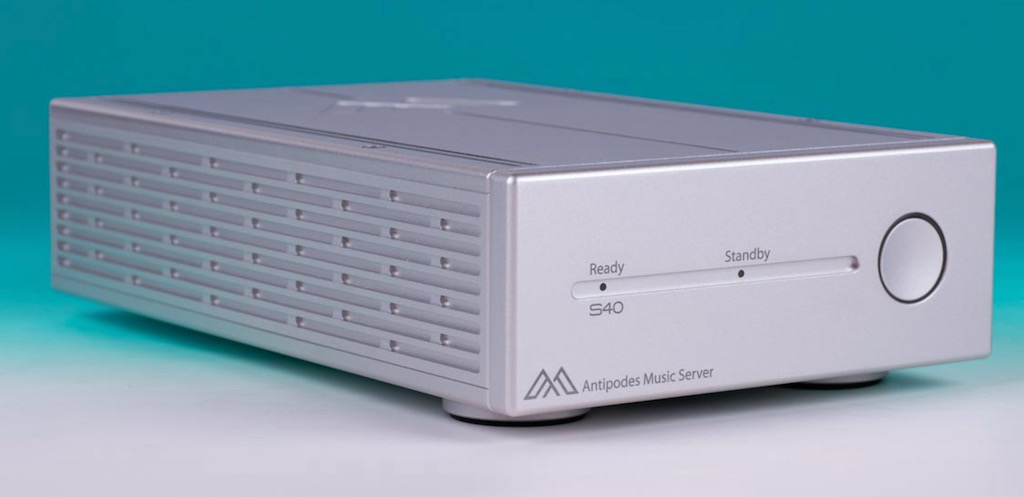
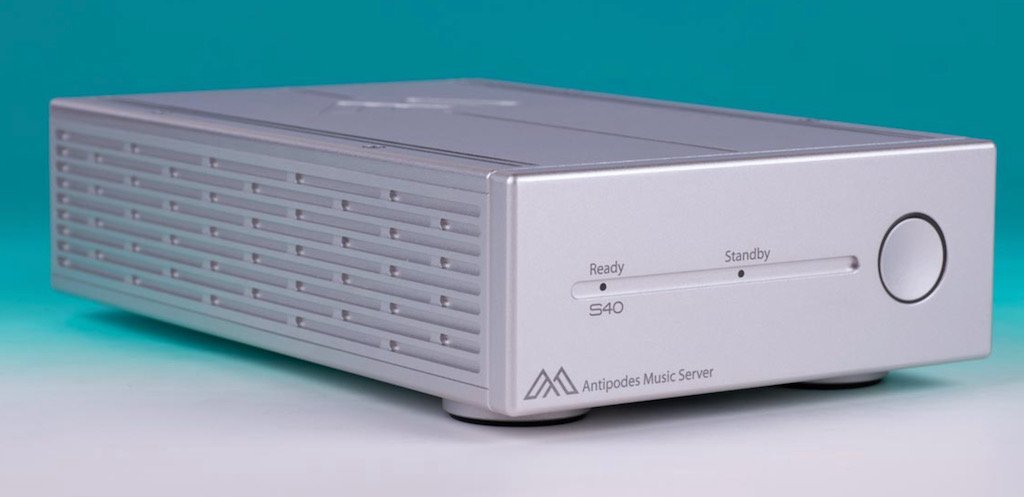

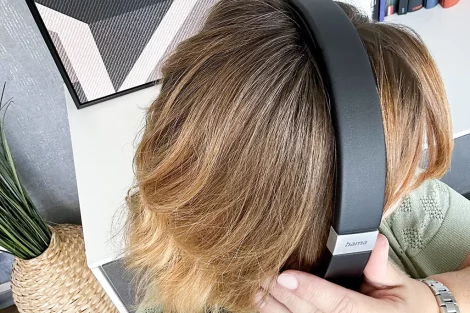
Add Comment